Types and their advantages of seedling boxes
Growing seedlings includes not only preparing the soil and caring for the sprouts, for the successful germination of crops requires the right choice of containers. The seedling box is one of the most convenient and popular containers. Special designs ensure the uniform development of healthy seedlings, they are purchased in stores or made with your own hands.
Why do we need boxes
There are several types of containers for growing seedlings, ranging from plastic cups to containers with many departments. Containers vary in size, material and purpose.
Seedling boxes have several advantages:
- Seedlings feel comfortable until the moment they are planted in open ground.
- Such containers save space and are ergonomically placed on the windowsill.
- There are no difficulties with additional lighting of all seedlings.
Types of seedling boxes
By the type of material, there are wooden, plastic and tin boxes for seedlings. Wood is a traditional material, but such containers are heavy. Plastic is a modern material from which almost everything is made, it is lightweight, strong enough, easy to clean, less afraid of fungus, moreover, it is more affordable than other materials. When buying such a container, you need to make sure that the plastic will not harm the soil and the crops growing in it.
Seedlings are placed in boxes in various ways: in a row or separately. Each method has its own type of construction:
- Solid. Such a box consists of one section of a square or rectangular shape. Often the container is adapted for transferring seedlings into open ground along with the soil. For this, the container is placed in the landing pit and disassembled. The sprouts remain in a coma of earth and are simply covered with garden soil.
- Sectional - for separate cultivation of seeds. Each cell of the cassette is equipped with a drain hole. The capacity is designed so that the plantings are not confused by the roots. It is a convenient alternative to separate seedling cups... The design saves space and allows for uniform maintenance of all plantings. Usually made from wood or durable plastic. There are sectional drawers that allow you to adjust the width of the sections by removing or rearranging the partitions. The advantage of cassette containers: each seedling receives a uniform amount of nutrients from the soil, which means that the entire seedling develops evenly.
Requirements for containers
In order for the seedlings to grow as healthy as possible, you need to choose a box that will meet these requirements:
- Average dimensions: depth - 8-9 cm, length - 40 cm, width - 25 cm. Too small boxes interfere with normal development, the sprouts are cramped in them, the seedlings thicken and stretch. Too large containers are also not recommended: most of the nutrients in the soil will not be useful. Huge boxes are inconvenient to transport.
- Drainage holes are required. Stagnant moisture can easily provoke a fungal disease.
- A tray should be attached to the box to drain excess water from the ground.
- The material should not be transparent. This is fraught with light hitting the root system, and ultraviolet light is dangerous for young roots.
- The walls of the container should be wide so that the seedlings are protected from temperature changes. Sufficient wall density will protect the sprouts from freezing and overheating.
- The structure must be strong and dense, with a reinforced bottom so that the soil does not move under mechanical stress, otherwise the root system will suffer. Fragile containers break quickly and are often disposable.
- The material must be safe for soil and plants. Cheap plastic will poison the soil.
Advice! In addition to the water tray, sometimes lids are attached to the boxes. This allows you to create a mini greenhouse without any extra hassle. The air will be constantly warm, which contributes to the early germination of seedlings.
How to make a box with your own hands: ideas
You can provide the seedlings with a convenient container with your own hands. This does not require the presence of special tools or carpentry skills: the most common household items are suitable for growing.
The advantages of creating containers with your own hands:
- It is cheaper than buying a ready-made container.
- You can build a container of the required size, adjust it to the windowsill.
- Cheap types of homemade containers are not a pity to throw away after use.
- The method is convenient in that the materials accumulated on the farm will not be wasted.
But store boxes also have their advantages:
- Plastic containers are of adequate strength.
- No need to waste time and materials on the construction of the box.
- Large selection of sizes, shapes and even colors of containers.
- Can be used multiple times.
- Easy to clean.
- All additional elements (greenhouse roof, pallet) are included with the purchase.
Simple wood construction
Any material at hand will do: plywood, boards, for example, from an old box.
For a wooden container for seedlings with your own hands you will need:
- boards,
- loops,
- corners,
- hacksaw,
- self-tapping screws for wood.
How to assemble the box:
- Measurements are taken first.
- Boards are cut and connected with self-tapping screws and corners in a rectangle.
- The bottom of the structure is attached with self-tapping screws. Don't forget the drain holes. It is convenient to assemble the bottom from several parts, between which there will be a small gap.
- The easiest way to make the cells inside the box is from cardboard - if necessary.
- The container lid is assembled from thin bars and plastic wrap. The bars are measured in proportion to the walls, a film is nailed to them on nails.
Minus boxes made of wood, both home-made and purchased: the material is subject to rotting due to constant exposure to moisture. The shelf life of such structures is usually several years. If possible, treat the container with wood protective compounds. Pour soil and sow seeds only after the composition has completely dried.
Container made of plastic or thick cardboard
You will need plastic bottles of 1 and 1.5 liters. The top of the bottle is cut with a knife or scissors. There should be a pot 7-10 cm high. The bottom is pierced in 2-3 places with an awl - these are drainage holes. But it is better not to take plastic cups: they are not strong enough to trust the seedlings. Under mechanical stress, the walls easily crumple, which will negatively affect the soil and root system of plants.
Solid box option - a wide bottle with a volume of 5 liters or more. The same liter containers will do, but you need to cut off not the top, but the side. A confectionery container will do.
For the same purposes, boxes of juice, yogurt are taken. The inside of the container is covered with foil. This material helps keep the container warm. Important: all food containers must be thoroughly washed and dried before creating a box. Leftover drinks will negatively affect vegetation.
Advice! To create a greenhouse, keep the tops of the bottles and boxes.
Metal boxes
A good option is metal containers for tea or other bulk products. The advantages of such boxes: do not rust, are easy to transport, keep a clod of earth with a root system motionless. The only difficulty is creating the drainage holes. You will need a hot awl or similar metal object.If there is a drill, a metal drill is inserted into it, but the shavings should be carefully removed.
Advice! Other available tools: a large egg tray. Save the shells, add germination medium and place in the container.
The cheapest way is to put the seedling soil in plastic bags. From such a container, it is easy to move seedlings into open ground, but you should handle it with extreme caution. The soil does not need to be disturbed before the shoots are moved.
Growing healthy seedlings requires care both at the time of sowing the seeds and in the process of their relocation to open ground. Correctly selected capacity will simplify the task of rooting, moving seedlings to the site, and also protect the seedlings from common problems: stretching, drying, wilting, developmental lag.
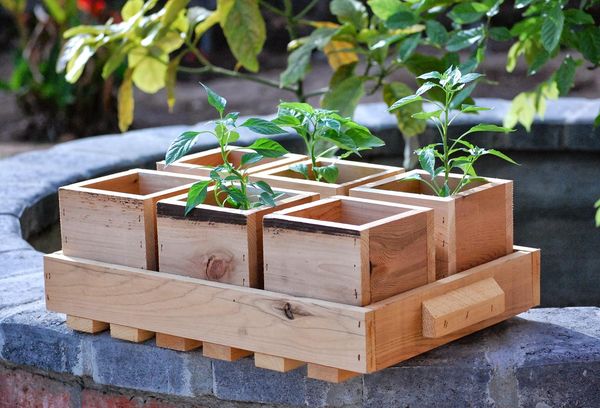
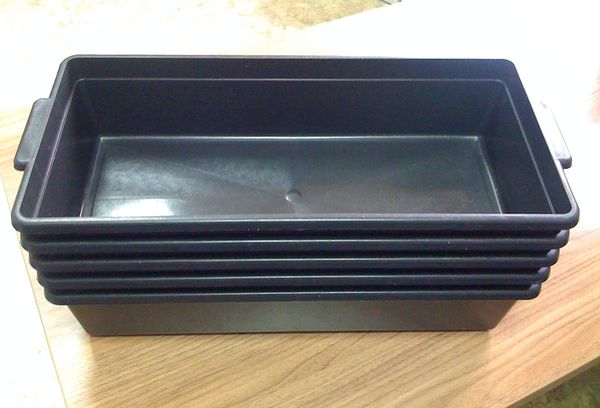
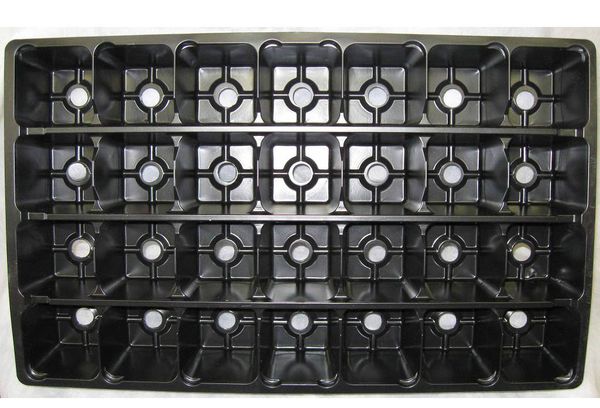
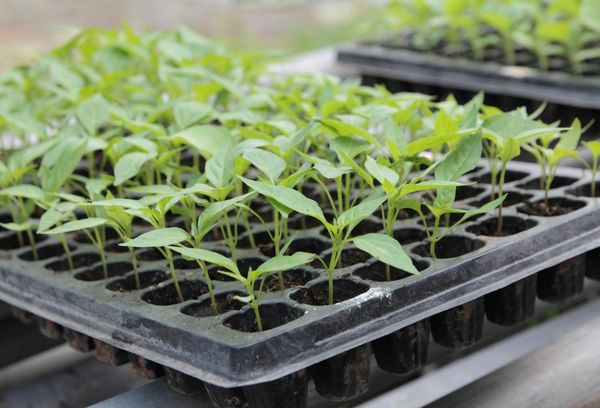
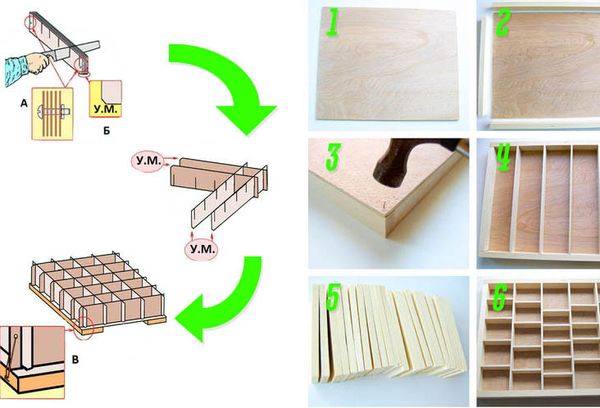
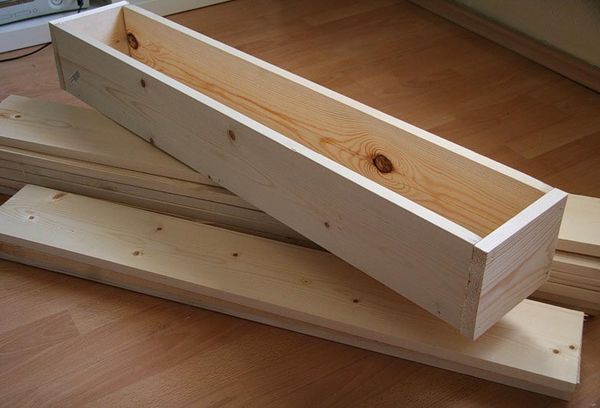
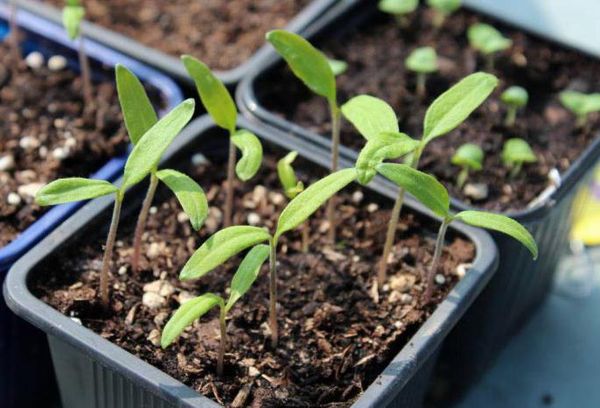

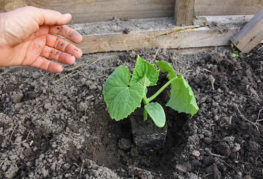
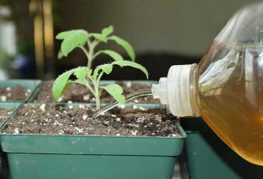
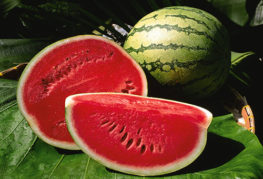
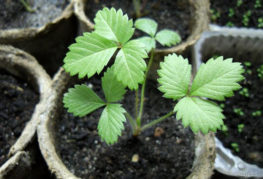
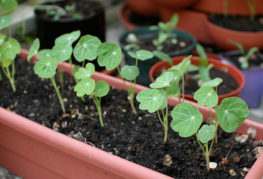
and will be published shortly.